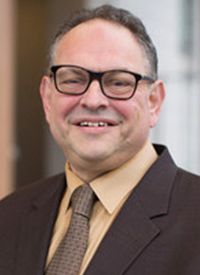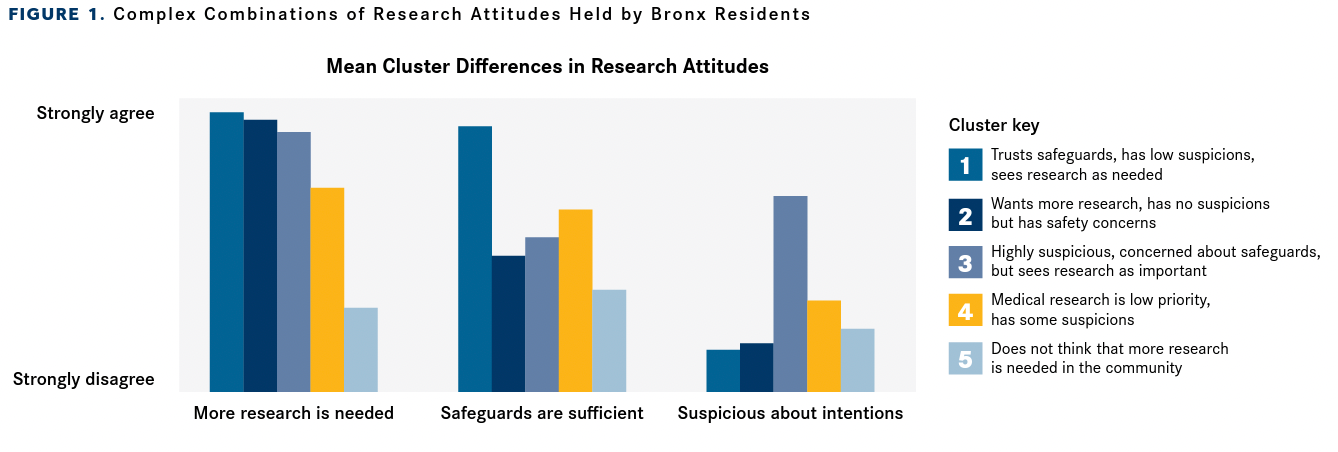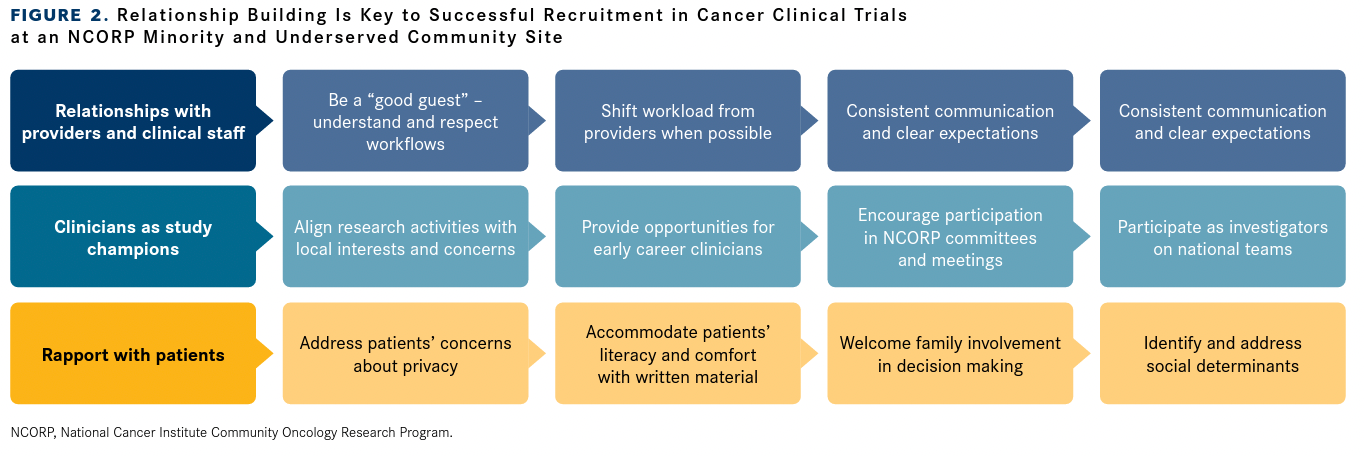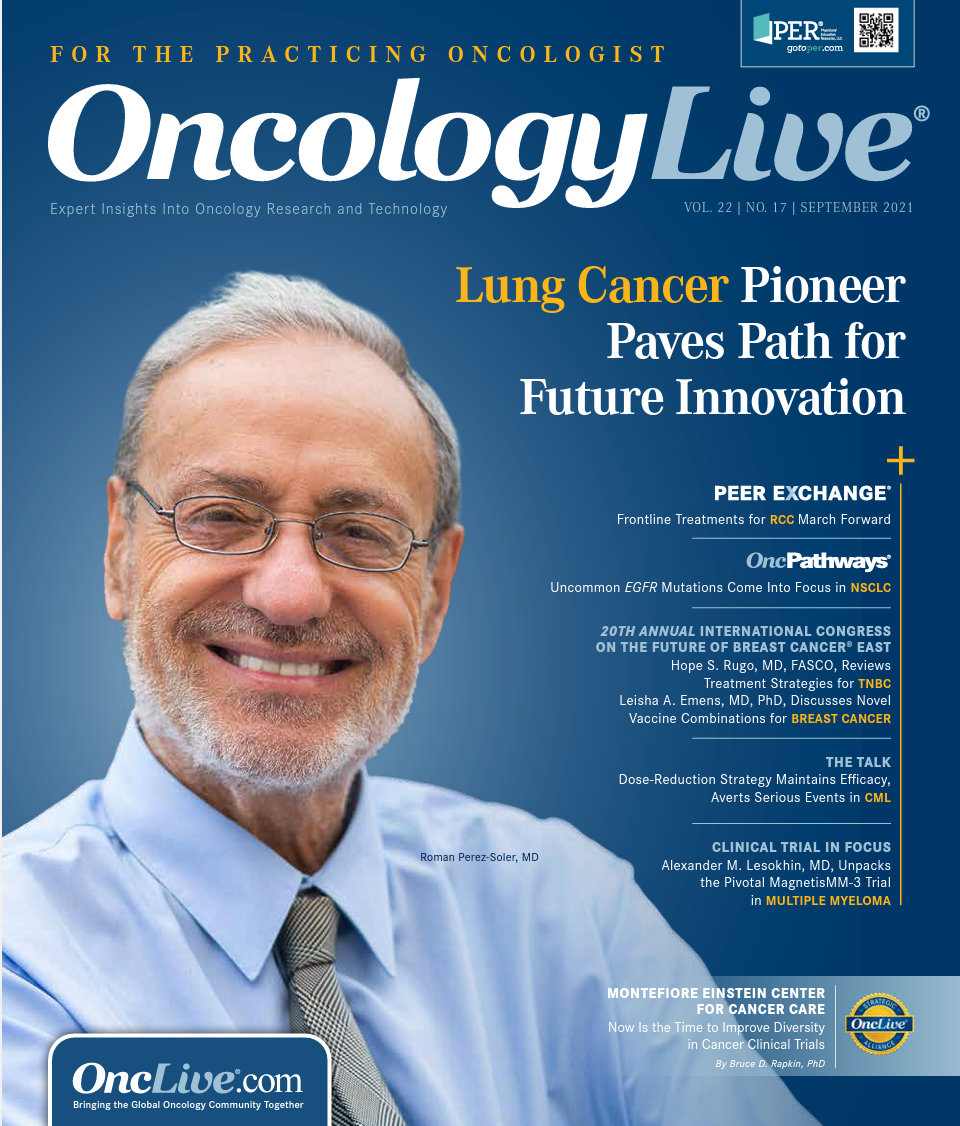Publication
Article
Oncology Live®
Now Is the Time to Improve Diversity in Cancer Clinical Trials
Author(s):
Participating in a clinical trial is the most effective way to gain access to new and potentially better ways to treat cancer, yet we’ve seen a decrease in the number of African American and Hispanic patients participating in oncology trials in 2003 to 2016, compared with 1996 to 2002.
Bruce D. Rapkin, PhD

Participating in a clinical trial is the most effective way to gain access to new and potentially better ways to treat cancer, yet we’ve seen a decrease in the number of African American and Hispanic patients participating in oncology trials in 2003 to 2016, compared with 1996 to 2002.1
Moreover, according to the 2020 Drug Trials Snapshot Summary Report, the 18 new oncology drugs approved by the FDA last year included a mere 5% Black and 6% Hispanic participants out of 4922 patients whose data supported the approval of these treatments.
Why the Low Percentages?
Achieving equal representation in clinical trials is a major challenge. Historically, there have been many reports of abuses of patients of color in medical research. We’re all familiar with the infamous syphilis studies caried out at Tuskegee2 in the 20th century.
It was not until 2020 that the family of Henrietta Lacks, a young Black woman whose cell line has supported a multibillion-dollar biotechnology industry, started to receive financial compensation. As a reminder, Lacks was never consulted about the research taking place.
These abuses, combined with language barriers among other hurdles, often result in the question from patients in minority populations: What is the benefit of participating in a clinical trial for me and my family?
In January 2020, Montefiore Health System and Albert Einstein Cancer Center were awarded a $5.9 million grant from the National Cancer Institute (NCI) to build on our success recruiting minority and underserved patients to cancer clinical trials. This new grant is part of the NCI Community Oncology Research Program (NCORP) and is a continuation of funding that was first awarded in 2014.
Our cancer center, based in the Bronx, New York, is one of only 14 NCORP Minority/Underserved Community Clinical Sites. The designation means that investigators of clinical trials must enroll at least 30% racial/ethnic minorities or rural residents. We take great pride that at our institution, 80% of clinical trial participants are minorities, compared with the nationwide figure of only 8%.
Part of our success in recruiting diverse populations is our ongoing research into community attitudes regarding clinical trial recruitment. In 2018, we conducted a Bronx community health survey, which sampled more than 1350 nonpatient residents of our catchment area.
Results showed that 88% of Bronx residents trust their doctors and hospitals “a lot” or “a fair amount”; however, when it comes to cancer care, only 56% of both non-Hispanic Black and Hispanic respondents agreed with the statement that “cancer care in your community is excellent” compared with 74% of non-Hispanic White respondents.
Perception that cancer care in the Bronx is excellent was notably higher among 110 cancer survivors in our sample (74% for non-Hispanic Blacks, 80% for all Hispanics, and 79% for non-Hispanic Whites), but not among 903 family members of current or past patients with cancer (55% for non- Hispanic Blacks, 58% for all Hispanics, and 76% for non-Hispanic Whites).
There was also a wide variation in attitudes about clinical research in our community (FIGURE 1). Although most Bronx residents see the importance of medical research, many have safety concerns and suspicions regard-ing researchers’ motives. Again, racial and ethnic differences are evident. For example, only 18% of non-Hispanic Black respondents held the most favorable attitudes toward research compared with 29% of non-Hispanic Whites (Figure 1, cluster 1), Conversely, 26% of non-Hispanic Black residents vs 11% of non-Hispanic Whites were in the group that was most suspicious of researchers’ inten-tions despite seeing the need for research (Figure 1, cluster 3).
FIGURE 1. Complex Combinations of Research Attitudes Held by Bronx Residents

Despite community concerns, it is import-ant to stress that in past studies, the main reason patients gave for not participating in research is that nobody asked them. These findings reinforce why we need to always be refining our strategies for clinical trial enrollment.
Three Keys to Success
Similar to any relationship, successful accrual is all about putting in the work. As FIGURE 2 summarizes, our NCORP team has identified 3 fundamental aspects:
Maintaining effective working relationships with providers and clinical staff
For those of us involved in clinical research, logistics must be a labor of love. Finding ways to shift research tasks from providers and staff is a priority. Support for screening patients for eligibility criteria is only the beginning. Orientation of clinic staff to study procedures and materials, figuring out space for research staff, and timing of approaches to clinicians and patients are also imperative. Ongoing communication and problem-solving are important to accommodate missed appointments, late arrivals, and unexpected patient care issues that arise. Throughout each study, our team monitors accrual and provides feedback to clinics about what worked and opportunities for improvement.
FIGURE 2. Relationship Building Is Key to Successful Recruitment in Cancer Clinical Trials at an NCORP Minority and Underserved Community Site

Engaging clinicians as study champions
Even at an academic cancer center, it can be difficult for practicing clinicians to carve out time for research. Involvement in NCORP is invaluable for clinicians early in their academic careers as it affords them the opportunity to contribute to research in a substantive way and to expand their profes-sional and academic networks. NCORP research bases offer funding opportunities for pilot studies with a focus on cancer health equity to assist early-stage faculty in launching work that addresses the needs of underserved and underrepresented patients. At our center, this approach has led investigators to find practical ways to address disparities. Examples include a screening program to preempt emergency department diagnoses of stomach cancer, fitness trackers to support patients undergoing radiation for lung cancer, and developing prostate cancer treatment aids tailored to men of ethnic minorities.3-5
Building rapport with patients and families
The accrual process must meet patients where they are at. Many patients in our system are not comfortable with written documents, and we’ve found a significant amount of people are reticent to disclose reading difficulties. For that reason, our research staff default to reading consents, surveys, and other materials aloud, unless the patient expresses a preference for proceeding independently. Providing a signature on a consent from can also constitute a barrier for some patients, especially when the document they are signing is not clear.
Patients in low-income communities, such as the Bronx, are often affected by significant negative social determinants of health. This speaks to the essential role of clinic navigators. These skilled individuals proactively identify challenges such as transportation barriers, lack of caregiver support, or financial concerns, and are experts in finding resources available to help.
As is evident in Figure 1, members of our community hold preconceived attitudes about medical research. Patients’ decisions regarding trial participation can be greatly influenced by their social network. We’re partnering with area hospitals and schools along with the Stand Up to Cancer Foundation to address knowledge gaps and attitudes surrounding clinical trials in the community. Education on the importance of representation in trials and the safeguards in place is essential. Equally important are the opportunities for community members to meet investigators outside the clinic to get a sense for the cancer research that is happening in their own backyard.
A Teachable Moment
Any diagnosis of cancer is daunting and can leave the most prepared and equipped individuals feeling lost. Now, put yourself in the shoes of an individual with cancer who is all too familiar with historical abuses, or for whom English may not be their f irst language.
To ensure that the newest options for cancer prevention, screening, and treatment benefit all, we must do everything possible to make clinical trials accessible. We must share information about our findings with communities so people who have traditionally been excluded can begin to see the benefits of participation—for themselves and future generations.
The COVID-19 pandemic shined a bright light on health disparities. Now, we have a once-in-a-lifetime opportunity to open dialogue with the communities we serve about how best to further science and medicine. Physicians, patient representatives, and advocates must act to achieve representation in clinical trials and ensure the latest cancer therapies are both tailored and accessible to all. We hope the lessons we have learned through our experiences help others in this endeavor.
Distribution of Respondents Across Attitudinal Clusters by Race/Ethnicity

References
- Duma N, Vera Aguilera J, Paludo J, et al. Representation of minorities and women in oncology clinical trials: review of the past 14 years. J Oncol Pract. 2018;14(1):e1-e10. doi:10.1200/JOP.2017.025288
- Gamble VN. Under the shadow of Tuskegee: African Americans and health care. Am J Public Health. 1997;87(11):17731778. doi:10.2105/ajph.87.11.1773
- In H. Can we preempt emergency department diagnoses of stomach cancer? OncLive®. August 1, 2019. Accessed August 11, 2021. https://www.onclive.com/view/can-we-preempt-emergency-department-diagnoses-of-stomach-cancer
- Purswani JM, Ohri N, Champ C. Tracking steps in oncology: the time is now. Cancer Manag Res. 2018;10:2439-2447. doi:10.2147/CMAR.S148710
- Tilburt JC, Pacyna JE, Petereit DG, et al. Decision aids for localized prostate cancer: initial outcomes from NCI Community Oncology Research Program Alliance Research Base Cancer Care Delivery Research (CCDR) Protocol-A191402CD-A Cluster-Randomized Trial. J Clin Oncol. 2020;38(suppl 15).:e24176. doi:10.1200/JCO.2020.38.15_suppl.e24176



























%20(2)%201-Recovered-Recovered-Recovered-Recovered-Recovered-Recovered-Recovered-Recovered-Recovered-Recovered-Recovered-Recovered-Recovered-Recovered-Recovered-Recovered-Recovered.jpg?fit=crop&auto=format)
%20(2)%201-Recovered-Recovered-Recovered-Recovered-Recovered-Recovered-Recovered-Recovered-Recovered-Recovered-Recovered-Recovered-Recovered-Recovered-Recovered-Recovered-Recovered.jpg?fit=crop&auto=format)
